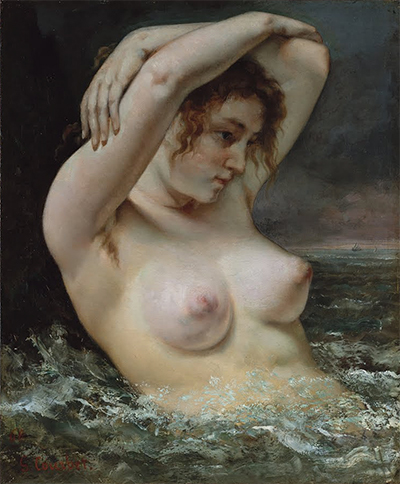This honest but powerful depiction was put together by Gustave Courbet in 1868 and is now believed to be owned by The Metropolitan Museum of Art in New York City.
It is one of this artist's boldest nude portraits, disguising nothing of this model, even including hair from her arm pit. He embraced the human body as it was, not as others prefered to see it. The model is most likely to have been 'Jo', his favourite muse who was also the girlfriend of James Whistler during much of their relationship. They are also rumoured to have been lovers, though this has never been confirmed. Courbet was known to be taken by her long red hair, of which he may not have come across to often in France during the 19th century.
There are not many portraits such as this in his career where the model is submerged up to their waist in water. The finished result almost reminds us of the work of the British Pre-Raphaelites, who famously celebrated the pale tones of the female body, often amongst themes of classical mythology and Victorian poetry. Courbet's style was different to that, more realistic, but he shared their love of the female body and felt happiest when depicting it in their work. Some of the finest portrait artists in the Pre-Raphaelite movement included John William Waterhouse, John Everett Millais, William Holman Hunt and Edward Burne-Jones.
The Woman in the Waves arrived at the point that Courbet had spent around four years straight producing one nude portrait after another. It was very much his chosen genre during this period and he also made use of the same models again and again. He would have known their figures in great detail by now, having studied them over several years. Jo was certainly his favourite of all, and features in many of his most famous paintings.




